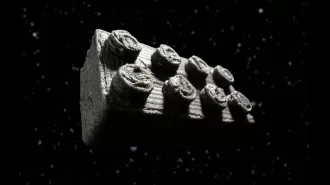Trump sees SpaceX fail to catch booster as it lands in water.
SpaceX surprises again with recent successful rocket landing and begins testing the most powerful launch vehicle ever created.
November 20th 2024.

SpaceX has once again captured the world's attention with yet another groundbreaking test flight. Just a few weeks after their impressive feat of landing a massive rocket booster with pinpoint precision, the company is now embarking on a new test flight for their most powerful launch vehicle ever built. The nearly 121-meter Starship system took off from their Starbase facility near Brownsville, Texas on November 19th.
The two-stage megarocket, which consists of the Starship spacecraft stacked on top of the Super Heavy booster, launched during a 30-minute window that opened at 5pm local time on Tuesday. For those who couldn't witness the event in person, SpaceX is live-streaming the entire flight on their X account. Adding to the excitement, the event was attended by none other than President-elect Donald Trump, along with SpaceX CEO Elon Musk. This is just another example of Musk's growing involvement in Trump's circle.
This test flight is a crucial step in SpaceX's mission to develop a fully reusable launch system. With NASA's Artemis program aiming to land astronauts on the moon as early as 2026, the Starship will play a vital role as the lunar lander. The goal of these test flights is to perfect the process of recovering and rapidly reflying both the Super Heavy booster and the Starship spacecraft for future missions. The ability to quickly reuse rocket parts is crucial in reducing the time and cost of space travel, whether it's for cargo or manned missions.
Despite the excitement surrounding this test flight, there were some setbacks. SpaceX had planned to steer the booster back to their launch tower, using what they call "chopsticks," but unfortunately, they didn't meet the necessary criteria and had to abandon the attempt. The Federal Aviation Administration, which licenses commercial rocket launches, stated that they didn't need to review the launch license alteration because the flight path closely mirrored a previous test flight.
This is the fifth integrated test flight of the Starship, and it has already garnered international attention. During the fourth flight in June, the spacecraft suffered significant damage, with several heat tiles falling off during reentry. However, SpaceX made significant improvements for this fifth flight, spending over 12,000 hours replacing the entire thermal protection system with newer-generation tiles and additional safeguards. These changes proved to be successful, with the Starship igniting one of its Raptor engines while in space for the first time.
Unfortunately, the Super Heavy booster did not have a smooth landing this time around. The team deemed the conditions unfavorable for a landing attempt, and the booster ended up splashing down in the Gulf of Mexico. SpaceX has made it clear that they will not compromise on safety, and the booster will only attempt a landing if all conditions are right. Meanwhile, the Starship spacecraft continued on its trajectory, firing up its engines and entering a coasting phase before re-entering the Earth's atmosphere.
With this successful test flight, SpaceX is one step closer to achieving their ultimate goal of sending humans to Mars. They also have government contracts with NASA worth billions of dollars to develop a cost-effective space transportation system for the Artemis program. The next steps for SpaceX include a long-duration flight test and a propellant transfer flight test in 2025, along with a critical design review for the Artemis III mission next summer. The success of these endeavors will be crucial in NASA's mission to land humans on the moon and beyond.
The two-stage megarocket, which consists of the Starship spacecraft stacked on top of the Super Heavy booster, launched during a 30-minute window that opened at 5pm local time on Tuesday. For those who couldn't witness the event in person, SpaceX is live-streaming the entire flight on their X account. Adding to the excitement, the event was attended by none other than President-elect Donald Trump, along with SpaceX CEO Elon Musk. This is just another example of Musk's growing involvement in Trump's circle.
This test flight is a crucial step in SpaceX's mission to develop a fully reusable launch system. With NASA's Artemis program aiming to land astronauts on the moon as early as 2026, the Starship will play a vital role as the lunar lander. The goal of these test flights is to perfect the process of recovering and rapidly reflying both the Super Heavy booster and the Starship spacecraft for future missions. The ability to quickly reuse rocket parts is crucial in reducing the time and cost of space travel, whether it's for cargo or manned missions.
Despite the excitement surrounding this test flight, there were some setbacks. SpaceX had planned to steer the booster back to their launch tower, using what they call "chopsticks," but unfortunately, they didn't meet the necessary criteria and had to abandon the attempt. The Federal Aviation Administration, which licenses commercial rocket launches, stated that they didn't need to review the launch license alteration because the flight path closely mirrored a previous test flight.
This is the fifth integrated test flight of the Starship, and it has already garnered international attention. During the fourth flight in June, the spacecraft suffered significant damage, with several heat tiles falling off during reentry. However, SpaceX made significant improvements for this fifth flight, spending over 12,000 hours replacing the entire thermal protection system with newer-generation tiles and additional safeguards. These changes proved to be successful, with the Starship igniting one of its Raptor engines while in space for the first time.
Unfortunately, the Super Heavy booster did not have a smooth landing this time around. The team deemed the conditions unfavorable for a landing attempt, and the booster ended up splashing down in the Gulf of Mexico. SpaceX has made it clear that they will not compromise on safety, and the booster will only attempt a landing if all conditions are right. Meanwhile, the Starship spacecraft continued on its trajectory, firing up its engines and entering a coasting phase before re-entering the Earth's atmosphere.
With this successful test flight, SpaceX is one step closer to achieving their ultimate goal of sending humans to Mars. They also have government contracts with NASA worth billions of dollars to develop a cost-effective space transportation system for the Artemis program. The next steps for SpaceX include a long-duration flight test and a propellant transfer flight test in 2025, along with a critical design review for the Artemis III mission next summer. The success of these endeavors will be crucial in NASA's mission to land humans on the moon and beyond.
[This article has been trending online recently and has been generated with AI. Your feed is customized.]
[Generative AI is experimental.]
0
0
Submit Comment





